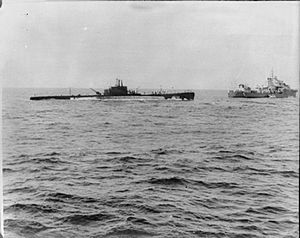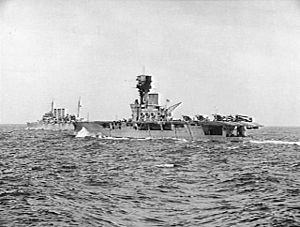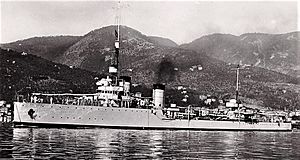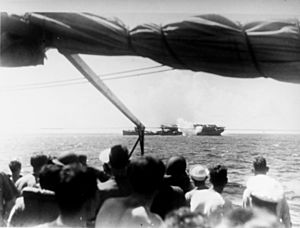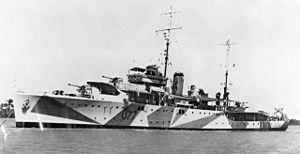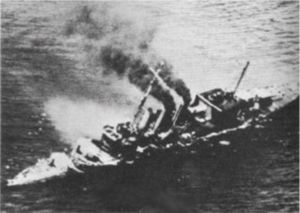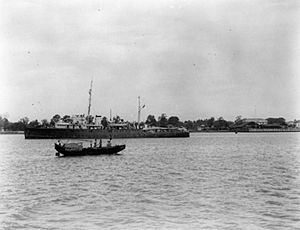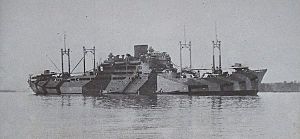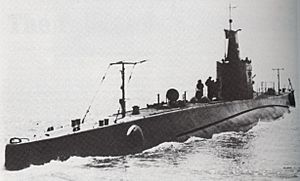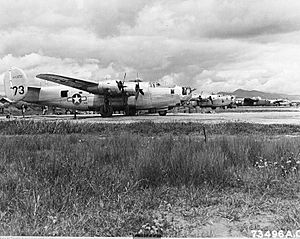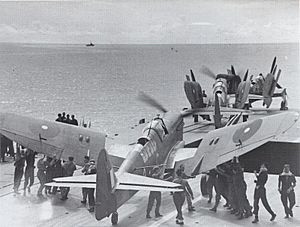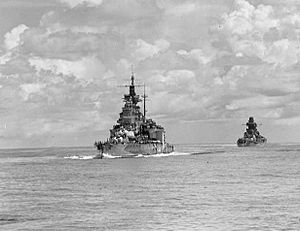Indian Ocean in World War II facts for kids
The Indian Ocean Campaign was a series of naval battles and operations that took place in the Indian Ocean during World War II. This vast ocean was a very important trade route for countries like Great Britain and its allies, connecting them to their territories in East Africa, India, and Australia.
At the start of the war, the British and Australian navies were the main forces in the Indian Ocean. The Netherlands also had a strong navy presence in the Dutch East Indies (modern-day Indonesia). Italy had a small fleet based in Massawa, a port in East Africa.
The Axis Powers (Germany, Italy, and Japan) wanted to stop the Allies' trade and supply lines in the Indian Ocean. They used different tactics, including hidden raiding ships and submarines. Later, Japan used aircraft carriers and cruisers for large-scale attacks. German submarines, called U-boats, also operated in the eastern Indian Ocean, especially after the Persian Corridor became a key supply route for the Soviet Union.
Quick facts for kids Indian Ocean Campaign |
|||||||
|---|---|---|---|---|---|---|---|
| Part of World War II | |||||||
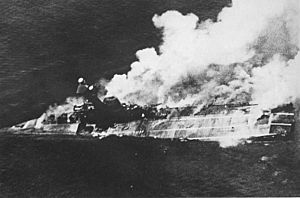 The aircraft carrier HMS Hermes (95) sinking during a Japanese raid. |
|||||||
|
|||||||
| Belligerents | |||||||
|
|
||||||
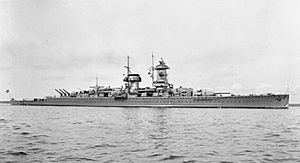

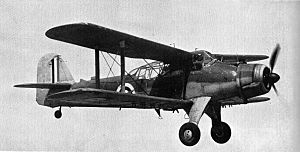
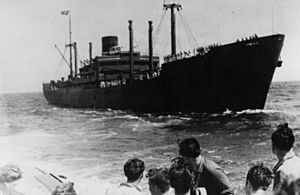
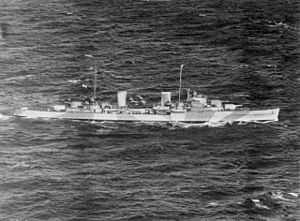
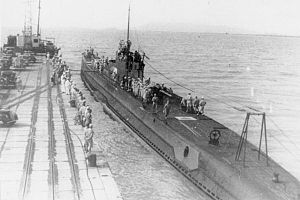
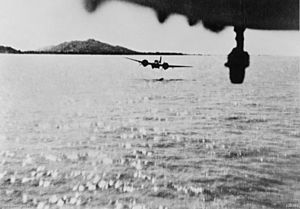

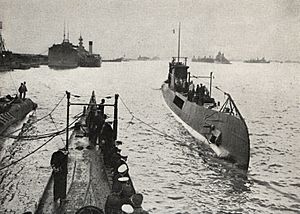
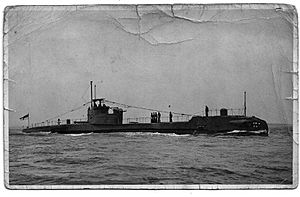
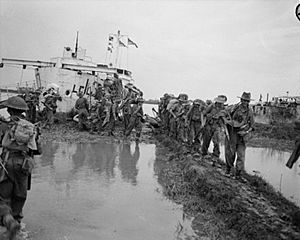
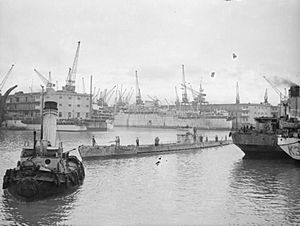
Contents
Key Events of the Campaign
1939-1940: Early Attacks and Italian Involvement
The war reached the Indian Ocean in late 1939 when the German warship Admiral Graf Spee sank a tanker near Madagascar. In June 1940, Italy joined the war, and its navy, based in Massawa, became a target for the Allies. Italian submarines began patrols, but some were lost due to technical problems.
German merchant raiders, disguised as regular cargo ships, also entered the Indian Ocean. These ships, like the Atlantis and Pinguin, sank many Allied merchant ships. The Allies had to spread out their warships to protect trade routes.
1941: Allied Offensives and Raider Hunts
In 1941, the Allies focused on capturing Italian naval bases in East Africa. British aircraft attacked Massawa, and Allied troops eventually captured the port in April. This forced the remaining Italian warships to either escape or be destroyed.
The Allies also hunted down German merchant raiders. In February, the Italian raider Ramb I was sunk. In May, HMS Cornwall sank the German raider Pinguin. However, another German raider, Kormoran, continued to sink ships. In November, Kormoran fought a fierce battle with HMAS Sydney off Australia, and both ships were sunk.
1942: Japanese Expansion and U-boat Threat
After the attack on Pearl Harbor, Japan became a major player in the Indian Ocean. Japanese submarines began patrolling, sinking several Allied ships. In February, Japanese forces invaded Timor and bombed Darwin, Australia.
In April 1942, the powerful Japanese carrier fleet launched a major raid on Ceylon (modern-day Sri Lanka). They sank the aircraft carrier HMS Hermes and several other British warships and merchant ships. This was a significant blow to the Allies.
German U-boats also became more active, especially around South Africa. They sank many merchant ships, causing heavy losses for the Allies.
1943: Submarine Warfare and Allied Countermeasures
In 1943, the fight in the Indian Ocean became largely a submarine war. Axis submarines, including German U-boats and Japanese submarines, continued to attack Allied shipping. A German U-boat base was even set up in Penang (Malaysia).
However, Allied anti-submarine efforts improved. They used intelligence to track U-boats and deployed more aircraft and warships to hunt them. Allied submarines also began patrolling the Strait of Malacca and Andaman Sea to stop Japanese supply ships.
1944: Carrier Raids and U-boat Losses
By 1944, the Allies gained more control. British aircraft carriers, including HMS Illustrious and Victorious, joined with the American carrier USS Saratoga to launch air raids against Japanese bases and oil refineries in Sumatra. These attacks aimed to weaken Japan's ability to wage war.
Allied submarines continued to score successes. HMS Tally-Ho sank the Japanese cruiser Kuma in January. The Allies also became very effective at sinking Axis submarines, often using information from decoded messages.
1945: Final Operations and Allied Victory
In 1945, the Allies focused on amphibious landings along the Burma coast in the Andaman Sea. These operations aimed to push the Japanese out of the region. Major landings included Operation Lightning at Akyab and Operation Dracula near Rangoon.
British aircraft carriers continued their air raids against Japanese targets. In May, the Royal Navy sank the Japanese cruiser Haguro in the Battle of the Malacca Strait. This was one of the last major naval battles in the Indian Ocean.
By August 1945, the war ended with an Allied victory. The Indian Ocean Campaign ensured that vital supply lines remained open for the Allies, contributing to their overall success in World War II.
|



